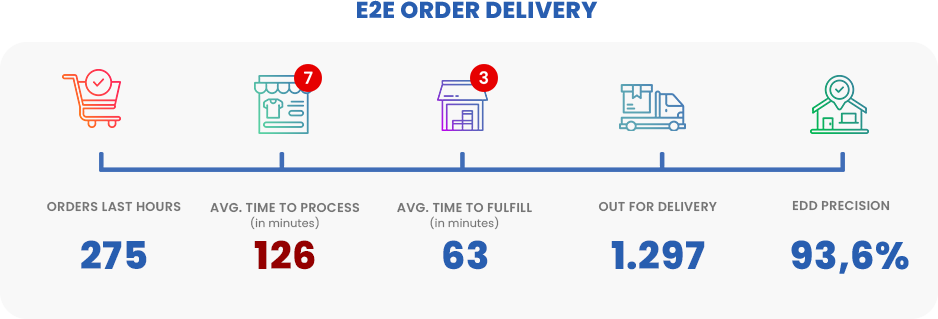Accessing the necessary insights needed to properly analyse your supply chain, however, is often a challenge. Not only is it a complex process with many steps and dependencies, but in most cases the data is also coming from multiple sources. Some of these sources may be in internally available but the bigger challenge lies in integrating external data sources, for example the logistics vendor you work with to deliver your orders.
This data needs to be unlocked and made available for analysis. Once you have access to the external data, it needs to be transformed into a format compatible with the information from your internal systems in order to create an overview of the E2E delivery process.

This new-found visibility will help you understand any bottlenecks and make it easier to both ask and answer important questions about your delivery process. Having access to this essential data allows you to have a real-time picture of how many orders are out for delivery or the average time needed to fulfil an order. You can also calculate the EDD precision, tracking just how well you keep your promises and fulfil your customers’ expectations.
Once you get started, the possibilities of utilizing data & analytics to improve your organization’s supply chain activities and continue to gain trust with your customers are endless. Starting with improving your EDD precision and delivering your customer’s orders on time, every time. By identifying what drives poor EDD precision proactively during the delivery process, you also create the opportunity to solve delivery issues before they result in a delay.
Imagine having the ability to set up customized alerts for each individual order placed on your website, providing you with every detail of that order, including being notified if and why an order is potentially going to miss the estimated delivery date. Receiving such notifications allows you to act quickly and intervene in the process. Being aware of this opportunity to make adjustments (e.g., on the delivery type from standard to express) may result in the order still arriving on time or at least give you the opportunity to communicate the delay to your customer, keep them informed about the status of their order and maintain a strong level of trust, even if their order may be delayed.







